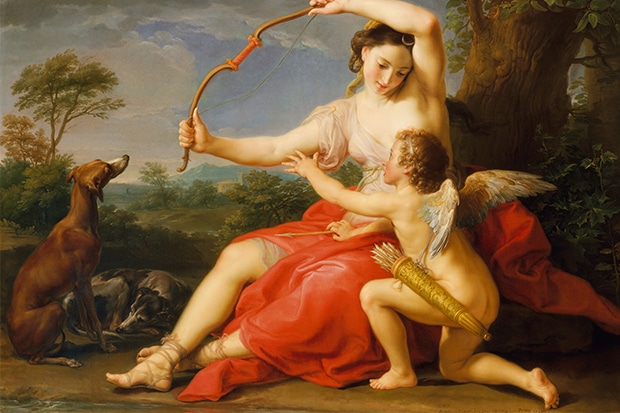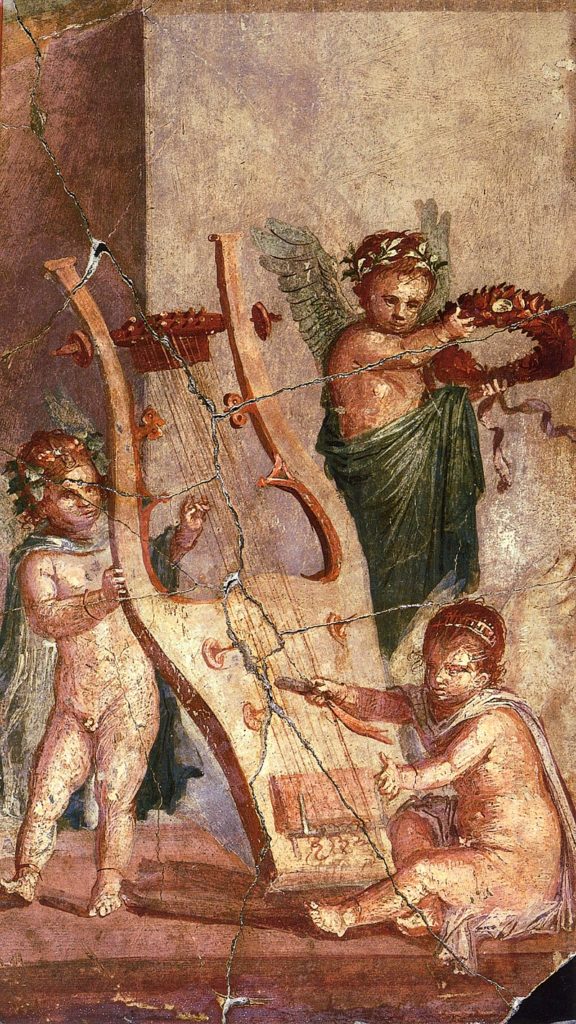Last updated on July 22nd, 2022 at 06:19 pm
The word Cupid is synonymous today with matchmaking and relationships. Type in the word ‘Cupid’ to Google, and you will immediately be confronted with dozens of internet dating sites while OkCupid.com has been one of the world’s largest online dating platforms for the last fifteen years.
Anytime we see an image of a small child-like figure bearing a bow and arrow, we automatically think ‘Cupid.’ But, while this is the modern association with the word, where did the concept of Cupid emerge from? And why is he still associated with love and desire thousands of years after his first creation as a mythical character?

Who was Cupid?
Cupid is the ancient Roman god of desire, love, affection, and attraction. The word Cupid in Latin means ‘passionate desire’.
Within the complex Roman pantheon of gods and goddesses, Cupid was typically depicted as the son of Venus and Mars. These were two principal deities in the Roman belief system: Venus, the goddess of love, sex, and beauty, and Mars, the god of war.
Typically, Romans presented Cupidin in line with our modern preconceptions of him. He was a figure armed with a bow and a quiver of arrows.
Eros, the Greek Quivalent of Cupid
The Greek equivalents of these characters were Aphrodite and Ares, while Cupid’s counterpart in the religious systems of the Eastern Mediterranean in ancient times was Eros. Cupid’s origins as a religious and mythological figure thus primarily lie in the earlier Greek society.
We find references to Eros as early as about 700 BC when the Greek poet Hesiod discussed him in his Theogony, a lengthy Greek poem detailing the origins and genealogies of the Greek gods and goddesses.
Cupid’s descent from Venus and Mars is significant. It is from his mother, Venus, that Cupid inherited his associations with love and desire. From father Mars, the god of war came the tempestuous, malevolent elements that were added to Cupid’s influence over the realms of love and desire.
Thus, for instance, Cupid could, through his interventions, make people love someone or turn them away from someone who sought their attention.
Cupids Arrows
Much of this played out through his bow and arrows. The arrows Cupid used were of two kinds. Some of them were believed to be made of gold, and these would arouse desire in the individual who they struck.
In contrast, others were made of lead and would have the opposite effect, making the individual who was hit by them averse to any potential love interests.

In classical mythology, Cupid was generally seen striking at the hearts of gods and human beings with his arrows, effectively toying with individuals’ emotions.
Cupid Acting With Malice
There are several famous stories of Eros and Cupid acting in this way. The most well-known is that of Eros shooting a golden apple at Apollo, the Greek god of archery, music, and dance. As the archery god, Apollo insulted Eros by belittling his abilities with a bow and arrow.
In revenge, Eros had shot Apollo with one of his gold arrows, intending to make Apollo fall deeply in love with a river nymph named Daphne.
But at the same time, Eros shot Daphne with one of his leaden arrows. Consequently, she became repulsed by Apollo, and so began a long period in which the god was condemned to pursue Daphne, who hated him because of Eros’s interference. This myth was subsequently applied, with few changes, to Cupid in Roman times.
As a result, we find the early imperial Roman love poet, Ovid, recounting it in his Metamorphoses, an epic poem of Roman mythology.
Cupid and Psyche
In another tale from Greek and Roman mythology, Aphrodite or her Roman equivalent Venus became jealous of the goddess of the soul, Psyche. She asked her son, Eros/Cupid, to intervene against Psyche. This Cupid agreed that he would make Psyche fall in love with a monster.
But in this particular instance, Cupid disobeyed his mother, as he was smitten with Psyche himself from first seeing her. Therefore he married Psyche himself, though on the peculiar condition that she could never see his face.

When this vow was broken, Cupid fled from her, though many years later, after searching the known world in search of him, Psyche was reunited with Cupid, and they lived together as immortals thereafter. As such, there was something of a personal love story involved in the mythology surrounding Eros and Cupid.
Cupid continued to be a popular mythological figure even after the decline of Roman civilization. For instance, he frequently appears in medieval literature and, as with all things Greek and Roman, became a regular feature of the art of early modern Europe. For instance, Lucas Cranach the Elder and Albrecht Durer both painted Cupid in the early sixteenth century.
Already by this time, the tradition of depicting Cupid as a child-like character bearing a bow and arrow had become commonplace. Thus, by the Renaissance period, the modern-day stereotype of Cupid was well on the way to emerging as the matchmaking figure we know today.

